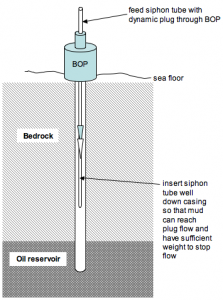Update on my post from yesterday is as follows. I have submitted my suggestion to BP through the process defined by them. However, they made it so difficult and bureaucratic, that I nearly gave up.
First, they wouldn’t allow anything but a US phone number in their electronic form, and with all the bells and whistles they had turned on it, it couldn’t be read by anything other than the latest version of acrobat.
Second, their form assumed I wanted to sell them something, despite being named a suggestion form. There were boxes for me to give all kinds of details on the parts or service I had, but no space for just a free form dump of the free and constructive suggestion I had.
So, I hacked their electronic form, got the email addy they could have just posted online, and now I will just sit back and “Wait for a response on your suggestion from BP, as we have received over 4000 and each will take some time to technically review”.
OK, thanks I will do that, you evil cocks




